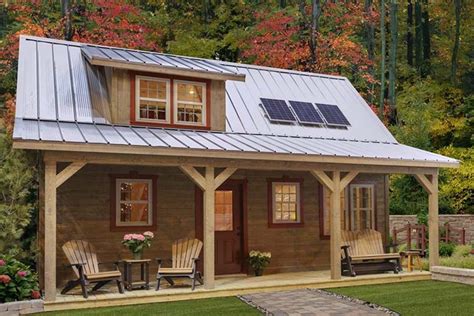2000 Sq Ft Off-Grid Home: Budget-Conscious Building
Dreaming of a spacious, self-sufficient home far from the hum of the city? A 2000 sq ft off-grid home might seem like an expensive and daunting project, but with careful planning and a budget-conscious approach, it's entirely achievable. This guide breaks down the key strategies for building your dream off-grid haven without breaking the bank.
Planning Your Budget-Friendly Off-Grid Home
Before even breaking ground, meticulous planning is crucial. This phase dictates the success of your project and directly impacts the final cost.
1. Defining Your Needs and Wants: A 2000 sq ft home offers plenty of space, but prioritize essential rooms and features. Do you need four bedrooms, or would three suffice? Can you compromise on a smaller garage or forego a formal dining room? Creating a detailed floor plan reflecting your actual needs helps reduce unnecessary expenses.
2. Site Selection and Preparation: Land costs significantly impact your overall budget. Consider less expensive locations further from major cities, but weigh that against the increased cost of transporting materials. Thorough site analysis is critical; factor in factors like access to water, sunlight for solar power, and soil conditions. Proper site preparation, including clearing and leveling, is also a substantial cost that needs upfront planning.
3. Choosing the Right Building Materials: This is where significant cost savings can be achieved. Opt for locally sourced and readily available materials whenever possible. Reclaimed lumber, salvaged materials, and cost-effective alternatives like straw bales or shipping containers can dramatically reduce construction costs.
4. Prioritizing Energy Efficiency: Off-grid living means minimizing energy consumption. This translates to cost savings in the long run. Focus on passive solar design, high-performance insulation, and energy-efficient windows and doors. These upfront investments will pay for themselves in reduced energy bills—which are nonexistent in a true off-grid setting!
5. DIY Approach and Labor Costs: Consider your own skills and those of friends or family. Taking on DIY tasks like painting, finishing, and landscaping can significantly cut labor costs. However, realistically assess your capabilities; don't compromise safety or structural integrity for cost savings.
Key Off-Grid Systems: Budget Considerations
Building an off-grid home requires careful consideration of several key systems:
1. Water System: The cost of a well and water pump can be substantial. Investigate alternative sources, like rainwater harvesting, which requires less upfront investment, though it requires careful planning and maintenance. Greywater recycling systems can also lower water consumption.
2. Solar Power System: Solar panels are a significant investment, but their long-term savings are undeniable. Calculate your energy needs accurately to avoid overspending on a system that's too large or underpowered. Investigate options like used solar panels or leasing systems to reduce initial costs.
3. Wastewater Treatment: Septic systems can be expensive. Explore more affordable options like composting toilets or constructed wetlands, which are environmentally friendly and budget-conscious alternatives.
4. Heating and Cooling: Passive solar design is paramount for efficient heating and cooling. Supplement with cost-effective solutions such as efficient wood stoves, geothermal heating, or even a combination of these.
Addressing Common Questions about Budget Off-Grid Homes
What are the biggest cost-saving measures when building a 2000 sq ft off-grid home?
The most impactful cost savings come from strategic material choices (locally sourced, reclaimed, or cost-effective alternatives), minimizing energy consumption through efficient design, and maximizing DIY labor. Thorough planning and prioritizing needs over wants are equally critical.
How can I finance an off-grid home build on a budget?
Traditional mortgages often don't cover off-grid homes due to the unique nature of the construction and systems. Explore alternative financing options like personal loans, home equity loans (if applicable), or crowdfunding.
What are some affordable off-grid building materials?
Reclaimed lumber, straw bales, shipping containers, and cob are all budget-friendly options. Consider locally sourced wood, readily available concrete, and other materials that minimize transportation costs.
Is it cheaper to build an off-grid home than a conventional home?
Not necessarily. While some aspects, like eliminating utility hookups, might save money, the upfront investment in off-grid systems can offset these savings. Careful planning and a DIY approach are essential to keeping costs down.
How can I ensure my off-grid home is energy-efficient and sustainable?
Prioritize passive solar design, high-performance insulation, energy-efficient windows, and renewable energy sources like solar power. Implement water conservation measures and explore sustainable wastewater treatment options.
Building a 2000 sq ft off-grid home on a budget requires dedication, research, and a willingness to adapt. But with careful planning, smart material choices, and a DIY spirit, your dream of a spacious, self-sufficient home is within reach. Remember to prioritize energy efficiency and sustainability to ensure your home is both affordable and environmentally responsible.

